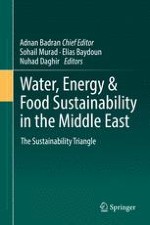Abstract
The world’s ability to produce enough food to feed the growing population is further constrained by water scarcity, particularly in dry areas. Water is an increasingly scarce resource and the FAO estimates that nearly 1.8 billion people will be living in countries or regions with absolute water- scarcity by 2025.
The problem faced by people and countries in dry areas amounts to more than resource scarcity. It is a combination of resource limitations, land and water degradation, and the low efficiency of resource use. Under conditions of resource limitations in dry areas – particularly water – future increases in productivity and production for improving food security and ensuring environmental quality, need to come from enhancing the efficiency of resource-use – rather than using more inputs or increasing the food production area.
The challenges of feeding the growing population under the conditions of climate changes, shortages of water for irrigated agriculture and degradation of arable land are increasing the demand to improve grain production from rainfed areas. The contribution of rainfed farming to food security in dryland countries can be substantially enhanced through increased adoption of currently available technologies supported by enabling policy and institutional environments. Rainfed farming can contribute more significantly to achieve new targets of food security if desired investment levels are realized. On-farm results show the huge potential for improving land and water productivity and profitability of smallholder rainfed agriculture. Yield gap in rainfed crops remain large enough to suggest considerable scope for increasing achievable yields.
Applied agricultural research-for-development suggests the following strategies for producing more food with less resources, particularly in rainfed areas of developing countries which are characterized by resource-poor small-holder farming systems: closing the yield gap of rainfed crops, enhancing adoption of improved technologies, promoting sustainable intensification and diversification of production systems, strengthening innovation systems, reducing vulnerability and managing risk, encouraging the use of water saving technologies, informing policy development, and increasing investment in agricultural research and development.
Advances in science to produce improved and higher-performing crops and livestock hold exciting prospects for making dryland food production systems more efficient, and more resistant to climatic pressures and new pests and diseases. This chapter illustrates the huge potential of technological innovation to improve food security, but also the need for supportive policies and institutions to encourage farmers to adopt these innovations.
